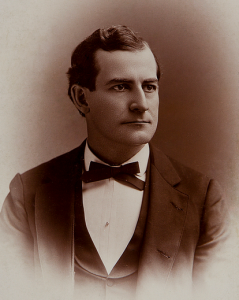Once upon a happier time, in the world of politics, 50 percent was considered a respectable approval rating and anything below that was a reason to lose sleep over for a politician before Election Day. Now mid-40s or even low-40s get elected, without so much as a breaking a sweat at the numbers.

When William Jennings Bryan first tried to run for President when in his 30s, many were reluctant to vote for him due to his young age. Now, however, politicians even younger than Bryan are out winning elections.
I recently came across an article on Politico, where the author draws attention to a change in political trend that is intriguing for the indifferent and worrisome for the interested. Last week’s election stands testimonial to this change in politics, with election and reelection of quite a few in their 40s. This shows a reflection on the voters’ distaste towards both the parties and an indication of a ‘picking lesser of the two evils’ mentality. When public opinion of an elected candidate is low, it shows a general mistrust towards both Congress and the entire political system of the nation.
According to both Democratic and Republican pollsters, the approval rating benchmark has slowly been eroding over the past few election cycles. In the past, election of a weak approval rating candidate was not entirely unheard of, but this culture of basing decisions on the net negative was not quite prevalent. The voters no longer write off a candidate for reaching the negative and may go on to vote for the candidate who is up against another candidate similarly floating comfortably in the higher negatives. Slowly but surely, approval ratings are losing their reliability as a candidate’s electability indicator.
Huge campaign spendings are overshadowing general public opinion, and the elections are increasingly geared towards hyper-partisanship with this year’s election more anti-Democrat, not unlike 2012’s anti-incumbent campaign where President Obama went on to win despite approval ratings below 50 percent. Last week’s election saw barely any winner who had an approval rating of 50 or above, be it Democrat or Republican.
A decade ago, almost all the candidates would be dissuaded from expecting a win by their strategists looking at numbers less than the magic 50. General public anger and increasing cynicism towards the government means the magic number is getting harder to achieve with each election cycle, even in relatively safe districts.
The issue doesn’t necessarily lie only with the public opinion that neither party really has any lasting solution to the nation’s problems but also with the campaign strategy employed by the parties. The electoral campaigns are now more focused on spreading the word that the other party is worst thing the public could choose rather than telling the public why they are the ideal choice. In a campaign system based on the principle of finger pointing, it is no surprise that the public leans towards the candidate with the lesser negative rather than the one with more positives. The 50 percent approval rating is not unattainable perhaps, with the right campaign approach but then again when the formula of not being ‘as bad as your opponent’ seems to work, the trend is likely to be around until the public collectively has a strong idea of what exactly they want and settle for nothing less.